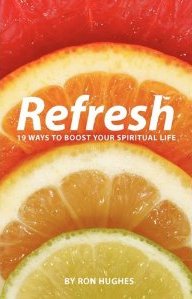 The God of All Comfort, by Hannah Whitall Smith (Whitaker House, 2003)
The God of All Comfort, by Hannah Whitall Smith (Whitaker House, 2003)
If God is indeed the God of all comfort; if He is our Shepherd; if He is truly our Father; if all the many aspects we have been studying of His character and His ways are true, then we must conclude that He is, in Himself alone, enough for all our possible needs. Therefore, we may safely rest in Him, absolutely and forever. (p. 284)
That’s an apt summary of the message of this book. Hannah Whitall Smith challenges readers to consider what the Bible says about God and His nature, and to compare that with what our inner responses reveal we actually believe. It’s not enough to have head knowledge that God is good, for example. We need to develop the heart knowledge that lets us base our lives and actions on the fact.
The version I’ve read has been “revised for clarity and readability” although it keeps the King James Scriptures. The next time I read it, I think I’ll look each one up in a newer translation as I go, for an even clearer grasp of what’s being said. And there are still some readability issues.
For example, Mrs. Smith refers to “comfortable faith,” meaning faith that’s not “uncomfortable” in the sense of distressing us because we have an unhealthy view of God as tyrant, weak or unloving. To my mind, “comfortable faith” implies laziness and stagnation.
I found much to bless, encourage and strengthen me in The God of All Comfort. Some things I didn’t quite accept, and I’m not sure if I didn’t understand them or if I take a different view.
According to the biography at the end of the book, Hannah Whitall Smith ended her days as a Universalist. In general, the teaching in The God of All Comfort meshed well with Scripture and drew me nearer to God, but with her change in mind I’m not too eager to adopt anything blindly (good advice at the best of times).
My copy of the book bristles with coloured flags marking key points. The best thing it did for me was challenge me to intentionally trust God as my Good Shepherd and to consciously rely on His Word.
According to the Wikipedia article on Hannah Whitall Smith, she lived from 1832-1911 in the US and England.
[Review copy from my personal library.]










